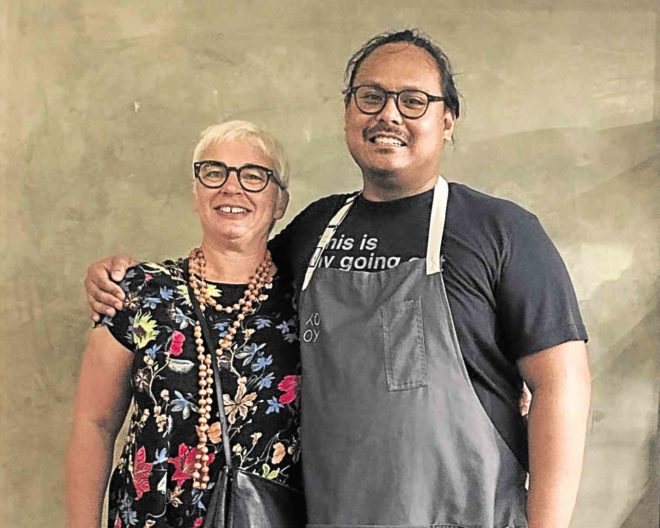
Last Saturday, a small group of chefs, restaurateurs and industry insiders gathered in the upper dining room of Toyo Eatery for a talk on “The Future of Food.” The speaker was Cecile Poignant, a trend forecaster who had just come from giving a presentation to the hotel industry on the future of travel.
Hers is a job I would love to have, except that no one would ever hire me. Almost every prediction I’ve made about the future of food has been wrong. While she has tentacular reach, antennae bristling, to different social media streams and conversations about the frontier, I tend to curl up in the fetal position and resist change.
I was pleasantly surprised to find that Poignant reported on one of my favorite food trends, Soylent, which is continuing to innovate and has a steady niche following among Silicon Valley types.
I’ve gone off Soylent for a while now, but for me it represents one of the possible ways in which the inconvenience of eating could be replaced. Instead of an unhealthy junk food meal or the sadness of eating giniling and rice at one’s desk, we would instead drink a bland but not unpleasant food replacement drink.
More connection
But most of the talk seemed to indicate that we would be going the other way—toward more interest in food itself, in something that reflects the place it was grown in, vertical gardens, urban farming, and so on. In other words, more connection with food, rather than less.
Two of the points that she came back to repeatedly were that “food is the new fashion,” and “sugar will be the new cigarettes.”
I tend to agree, with the added caveat that while it’s good that more people will be thinking about food and more money will be diverted toward the industry, having food as the arena where people define themselves is not going to be good for food itself.
In 1967, Roland Barthes wrote the seminal texts of semiology (later semiotics), Système de la mode, or The Fashion System. Although the method has been used for almost anything, especially by Ph.D students in cultural studies looking for thesis subjects, the idea then of treating clothing as text and fashion as language was groundbreaking.
The same consciousness about food as language, eating as sexual metaphor, and the meal as experience is already well under way, and it presents us with a dilemma. The tropes of returning to the earth, of heritage, of terror, of slowness, are trends that we want everyone to get on board with—but not as trends, because trends, by their very definition, are fleeting.
We would like a return to real food, to the homeliness of grandmother’s cooking, but at the same time, we want our daughters not to grow up with the same repressive conditions that made our grandmothers champions of the home kitchen. We trumpet emancipation, but at the same time celebrate the domestic goddess.
This is not a contradiction. If women (and men) are truly free, they should also have the freedom to cook if they choose to.
Impossibly perfectionist
But the language of food has many dialects, and the argot of slow food, organic produce, and increased connection to the farm is only one of them.
Another way food has been co-opted as self-expression is the impossibly perfectionist world of Goop, steamed vaginas and all. This is food as the signifier of a fantasy lifestyle, where a sun-dappled table spread with Mediterranean cuisine and expensive wine is the symbol of absolute control over the domestic sphere: perfect pantries, never wanting; perfect control over one’s body; a perfect life, with Bugaboo stroller and children who share luminous complexion.
Kinfolk is also an offender, as are Monocle and Wallpaper. Then, of course, there’s my pet peeve, the foodie traveler who is less interested in the food than in being able to brag about how many restaurants on the World’s 50 Best Restaurant list he’s tried.
But how terribly prescriptive it would be for me to purport to dictate what food should be for different people. Food is no longer the little pasttime of scholars working on the fringes of academia, derided as not a proper discipline.
Perhaps the most surprising things for me was that there was a talk at all on “The Future of Food.” In the old days, one would be met by a blank stare, or the dismissive shrug that the future of food was to be eaten; and the future of that which was eaten was, well…
Then again, turning into crap is a very possible future for food, if those who see it as a lifestyle and nothing more were to have their way.—CONTRIBUTED